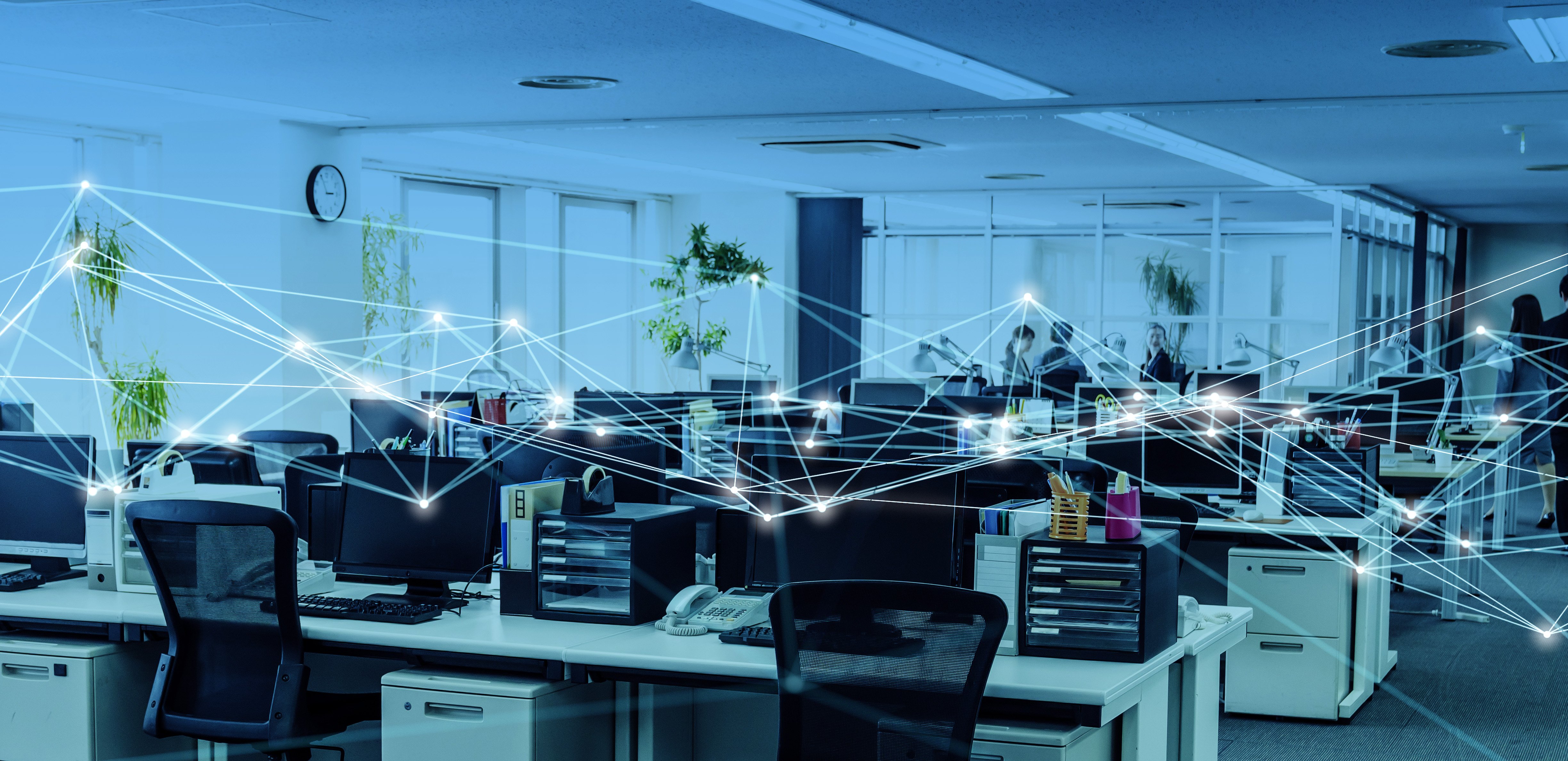Smart, green buildings are the future
Buildings are expected to deliver increasingly high-quality environments using minimal energy. In the future, they will be zero emission carbon in use and will support the wellbeing of occupants with elements such as temperature controlled environments and optimally ventilated and lit spaces.
With the right infrastructure, these smart, green buildings will be able to accommodate technological changes and adapt to needs as they arise.
What is a smart building?
A smart building integrates a wide array of systems across the entire facility, including HVAC (heating, ventilation, and air conditioning), lighting controls, alarm systems, and security measures. Converging these operational technologies into a unified IT-managed network infrastructure allows for efficient real-time monitoring and control of functions from a central platform. The result is enhanced operational performance, and a space that responds effectively to the needs of the people inside and the demands of building management.
The convergence of essential building services not only streamlines maintenance, but also reduces energy consumption significantly, leading to lower operating costs and reduced carbon emissions.
The Digital Building Solutions (DBS) portfolio from Prysmian transforms buildings into smart, green buildings by providing an internal DC grid with smart environmental sensors, energy efficient lighting plus an IoT (Internet of Things) Gateway to communicate wirelessly with these and thousands of sensors via EnOcean and Bluetooth protocols. The solution supports the growing range of IoT devices on the market and can integrate with any Building Management System, although it is not a requirement if there is not already one in place.
The internal DC Grid that DBS provides supports smart building devices using less energy. Mains electricity is AC as it is easierto generate, transmit, and distribute over long distances. However, DC provides a stable, continuous voltage which is essential for the smooth operation of sensitive electronic devices. When transforming AC to DC, energy is lost as waste in the process. By providing DC directly, the need to convert the current is removed, reducing the energy use of a building by up to 25%.
Digital Building Solutions runs on a Power over Ethernet (PoE) category cable infrastructure. PoE delivers DC power to devices through copper ethernet cabling, consolidating both power and data connections into a single cable. With its simple installation process and compatibility with current standard devices, PoE allows a smart building to be developed over time, according to technological innovations, legislation requirements, and the changing needs of occupants.
How do smart buildings benefit occupants?
Smart buildings can tailor specific spaces to the needs of individuals or groups, creating personalised environments that promote better productivity and wellbeing. There are endless possibilities for how a smart building can operate, depending on the devices integrated into the network.
Smart buildings can be equipped with environmental sensors that monitor factors such as light levels, temperature, and air quality. The data these sensors collect allows the building to automatically adjust lighting and climate conditions for maximum comfort. For example, lighting systems can mimic natural daylight patterns, helping occupants stay alert and reducing eye strain, which can lead to increased productivity.
Sensors that measure air quality can ensure that the building maintains healthy Co2 levels and filters out pollutants. Better air quality contributes to clearer thinking, fewer headaches, and lower stress, ultimately improving overall wellbeing.
Advanced security features such as surveillance cameras and access control can also be included and interconnected with building management systems to provide comprehensive safety solutions.
How does a smart building communicate?
IoT devices such as environmental sensors collect and share data. IoT devices in smart buildings built with DBS use open protocol communication, which means they speak the same digital language, regardless of manufacturer or software platform. This is crucial because it provides flexibility to building managers, allowing them to incorporate devices from different vendors, ensuring compatibility and growth potential. With this approach, buildings aren't locked into one specific technology or system, offering endless options to upgrade or expand the smart building ecosystem.
Data from IoT devices can be sent to a Building Management System (BMS), which serves as the central control hub. The BMS can automate adjustments, such as lowering shades when too much sunlight enters a room or increasing airflow when Co2 levels rise. This central control makes operations much easier to assess and manage.
For buildings without an existing BMS, the upfront investment of installing one can be costly. The Digital Building Solution portfolio from Prysmian offers software that functions as a central control hub in place of a BMS for a more economical solution.
With open protocol communication at its core, DBS provides the flexibility to adapt and scale as technology advances, ensuring buildings stay smart for years to come.
Smart, green buildings aren’t just a trend, they’re the future of how we work, live, and interact with our environments. They are essential to reduce global Co2 emissions. By investing in smart technology now, building owners and managers can create spaces that are healthier, more efficient, and ready for whatever the future holds, while also providing a pathway to net zero carbon emissions.
For more information about Digital Building Solutions, click here.



